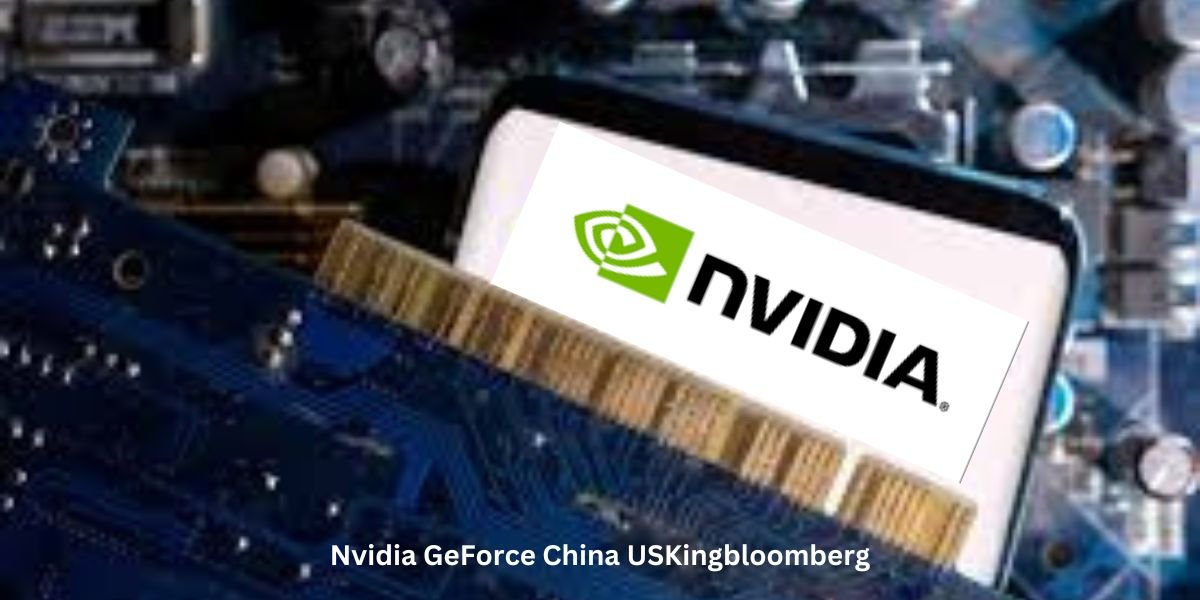The tension between nvidia geforce china uskingbloomberg, one of the leading GPU manufacturers, and the geopolitical dynamics involving China and the United States has been making headlines. Nvidia’s GeForce graphics cards and AI chips are pivotal in shaping industries like gaming, artificial intelligence, and cloud computing. However, export restrictions and regulatory hurdles have placed the company in a challenging position.
This article delves into the relationship between Nvidia geforce china uskingbloomberg, focusing on key questions like “Why did Nvidia stop selling to China?” and “Is Nvidia connected to China?”
Why Did Nvidia Stop Selling to China?
US Export Restrictions
The United States has imposed strict export controls on certain advanced semiconductor technologies, particularly those with AI capabilities. Nvidia’s high-performance GPUs, such as the A100 and H100 chips, fall under these restrictions due to their potential dual-use in military and AI research.
Key reasons for Nvidia geforce China USkingbloomberg this decision include:
- National Security Concerns: Advanced chips can enhance China’s AI capabilities, potentially giving them an edge in surveillance and defense.
- Technology Leadership: The US aims to maintain dominance in the semiconductor industry by limiting China’s access to cutting-edge technologies.
Impact on Nvidia geforce China USkingbloomberg
- Revenue Decline: China accounted for a significant portion of Nvidia’s revenue, making these restrictions a financial challenge.
- Adjusted Products: Nvidia introduced downgraded chips, like the A800, to comply with US regulations while still catering to the Chinese market.
Read Also: How US $2B Buckley Bloomberg: Deep Dive into Economic
Is Nvidia Connected to China?
Business Ties
Nvidia has strong business ties with China, as the country represents a key market for GPUs and AI hardware. Major Chinese companies, including Alibaba, Tencent, and Baidu, rely on Nvidia’s technology for cloud computing and AI services.
| Aspect | Details |
|---|---|
| Market Share in China | Significant share in gaming and AI |
| Major Clients | Alibaba, Tencent, Baidu |
| Product Adaptations | Downgraded chips like A800 for compliance |
Strategic Importance
China is a global hub for AI research and cloud computing. Nvidia’s hardware is critical in powering data centers and AI models in the region.
Nvidia’s Role in the US-China Tech War
1. US Policy on Semiconductors
The US government’s CHIPS and Science Act emphasizes domestic semiconductor manufacturing and reducing dependence on foreign countries, particularly China. Nvidia, as a US-based company, plays a pivotal role in supporting this initiative.
2. China’s Response
In response to restrictions, China has accelerated efforts to develop domestic semiconductor capabilities. Companies like Huawei and SMIC are investing heavily in research to reduce reliance on Nvidia and other US-based firms.
Read Also: Sk Sabir Boss UID You Need to Know About the Free Fire Star
GeForce Gaming GPUs and Their Market in China
Popularity of GeForce in China
Nvidia’s GeForce GPUs are a favorite among gamers in China due to their high performance and support for cutting-edge graphics. The Chinese gaming market, one of the largest in the world, heavily depends on Nvidia’s GPUs for:
- Esports tournaments.
- Online multiplayer games.
- VR gaming.
Restrictions on Gaming GPUs
While AI chips face stricter controls, gaming GPUs like GeForce are not entirely banned. However, geopolitical tensions could impact their availability in the future.
Challenges for Nvidia geforce China USkingbloomberg
1. Regulatory Hurdles
- US export restrictions limit Nvidia’s ability to sell high-performance chips.
- Compliance with regulations adds operational complexity.
2. Competition from Domestic Players
Chinese companies like Biren Technology and Cambricon are developing GPUs as alternatives to Nvidia’s offerings.
3. Supply Chain Disruptions
Geopolitical tensions and COVID-19 have affected global supply chains, impacting Nvidia’s production and distribution.
Read Also: Sportsgurupro Spin Win Daily Your Gateway to Exciting Wins
Opportunities for Nvidia Despite Challenges for nvidia geforce china uskingbloomberg
1. Adaptation to Regulations
Nvidia’s launch of compliant products like the A800 demonstrates its ability to navigate regulatory challenges while maintaining a presence in the Chinese market.
2. Growth in AI and Cloud Computing
Despite restrictions, demand for AI and cloud solutions continues to grow, providing opportunities for Nvidia to cater to non-restricted segments.
Read Also: AI Alexa Siriolsonbloomberg Assistants Shape the Future of AI
Nvidia geforce china uskingbloomberg: Comparison of Nvidia’s Strategy in the US vs. China
| Aspect | United States | China |
|---|---|---|
| Regulatory Environment | Supportive under CHIPS Act | Restrictive due to export controls |
| Market Focus | AI and defense sectors | Gaming and cloud computing |
| Revenue Contribution | Moderate | Significant |
Conclusion
Nvidia GeForce China USKingbloomberg encapsulates the complex dynamics of Nvidia’s role in the ongoing US-China tech war. While regulatory challenges have created hurdles, Nvidia’s ability to adapt and innovate positions it as a resilient player in the global semiconductor market. As the situation evolves, the company’s strategies in navigating geopolitical tensions will be critical in shaping its future.
FAQs
1. Why did Nvidia stop selling to China?
Nvidia faced US export restrictions on high-performance AI chips like the A100 and H100 due to national security concerns. However, the company continues to sell downgraded versions like the A800.
2. Is Nvidia connected to China?
Yes, Nvidia has strong business ties with China, supplying GPUs and AI hardware to major companies like Alibaba and Tencent.
3. How has the US-China tech war affected Nvidia?
The tech war has limited Nvidia’s ability to sell advanced chips to China, impacting revenue and forcing the company to adapt its product offerings.
4. Are GeForce gaming GPUs banned in China?
No, GeForce gaming GPUs are not banned. However, future restrictions could affect their availability.
5. What is Nvidia doing to navigate these challenges?
Nvidia has introduced compliant products like the A800 for the Chinese market and is diversifying its focus to mitigate risks.
